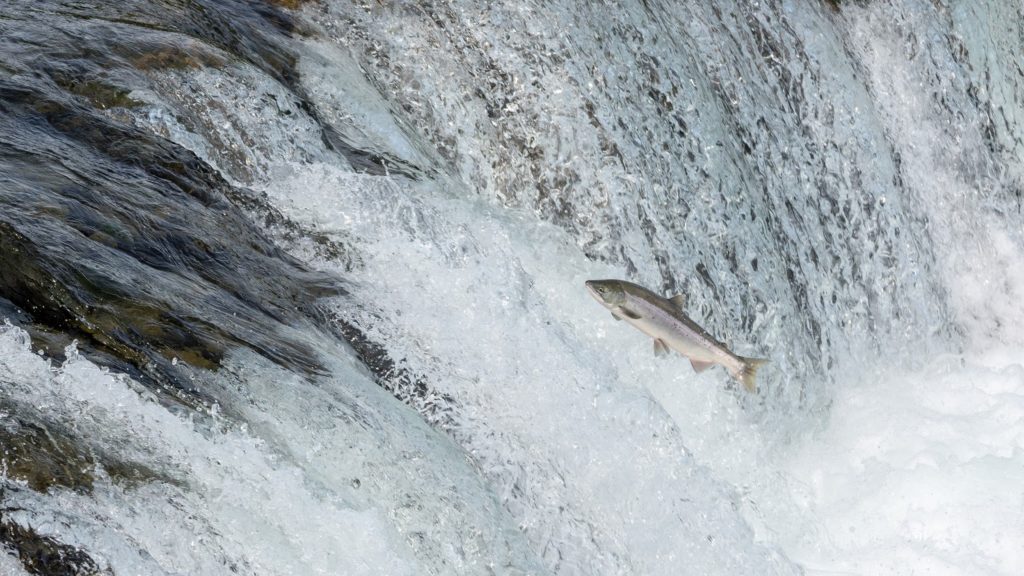Many people believe that farmed fish wouldn’t do very well in the wild, but do direct experiments comparing farm-raised to wild fish support this belief? In a collaborative study, researchers from the Southwest Fisheries Science Center and the Hubbs-SeaWorld Research Institute pitted wild and captive reared fish against each other to determine which group could swim the fastest for the longest time. The competitors were California yellowtail (Seriola dorsalis), which is a type of amberjack and an increasingly popular fish to farm due to its high growth rate and high demand from the sushi industry.
The scientists fished 7 wild yellowtail between 12 and 15 centimeters long from local waters. The 10 selected farmed fish were offspring of wild yellowtail and raised according to standard protocols. The fish were placed one at a time in a tunnel of water, whose speed was increased every half an hour until the fish could no longer swim in a regular, symmetrical fashion. The farmed fish on average had a lower aerobic potential, meaning they exhibited a lower maximum swimming speed and a higher oxygen consumption than the wild fish. This is bad news for yellowtail farmers, because a lower aerobic potential means the farmed fish have a higher standard metabolic rate (SMR) than wild fish. Having a higher SMR means the fish need more food to grow to a marketable size and grow more slowly because they need more energy just to swim and carry out everyday bodily functions.
Other studies have also found that farmed fish swim slower than wild fish, but this was the first time California yellowtail were tested and the first time farmed fish with wild parents were tested. The reduced swimming speed of farmed fish has been attributed to multiple generations of breeding in captivity, because farmers do not consider the speed of the fish and do not check for internal deformities when selecting fish to breed. However, the captive reared-fish in this study came from wild parents, meaning they didn’t have the generations of selection by farmers. Hence, their breeding strategy isn’t to blame for their poor athletic performance, and rearing procedures for raising young yellowtail are not ideal and should be experimented with further.
After the water tunnel tests, x-rays revealed that four of the farmed fish had spinal deformities, namely a shortening of the vertebrae, which makes it harder to swim. Deformities are much more common in captive-reared fish due to the lack of selection – no predators and no live prey means they never had to swim very fast to save their skins or catch food. Deformities (such as scoliosis in the spine) in growing fish are often caused by subpar rearing techniques – too little vitamins in the feed, too much of certain minerals like potassium, or too warm water. A lack of exercise for farmed fish has also been shown to increase the number of spinal deformities.
Farmed fish need to be fit for their own well-being and the prosperity of their farmers. Deformities lead to a poor quality of life for the fish and a loss of profit for the farmer – deformed fish are usually turned away at processing plants which buy fish to prepare products for human or animal consumption. Farmed fish can be as fit or fitter than wild stocks if farmers develop optimal methods for raising fish, and breed fish that have low metabolic rates and can sustain wild swimming rates. Exercise is also important for farmed fish – in addition to reducing the number of deformities, providing fish a current to swim against can increase their growth rate with the same amount of feed and reduce aggression, which reduces stress. In essence, working out reduces stress and increases the quality of life for fish just like it does in humans, and fish workout programs can definitely be implemented more often to raise fitter fish for the future!


